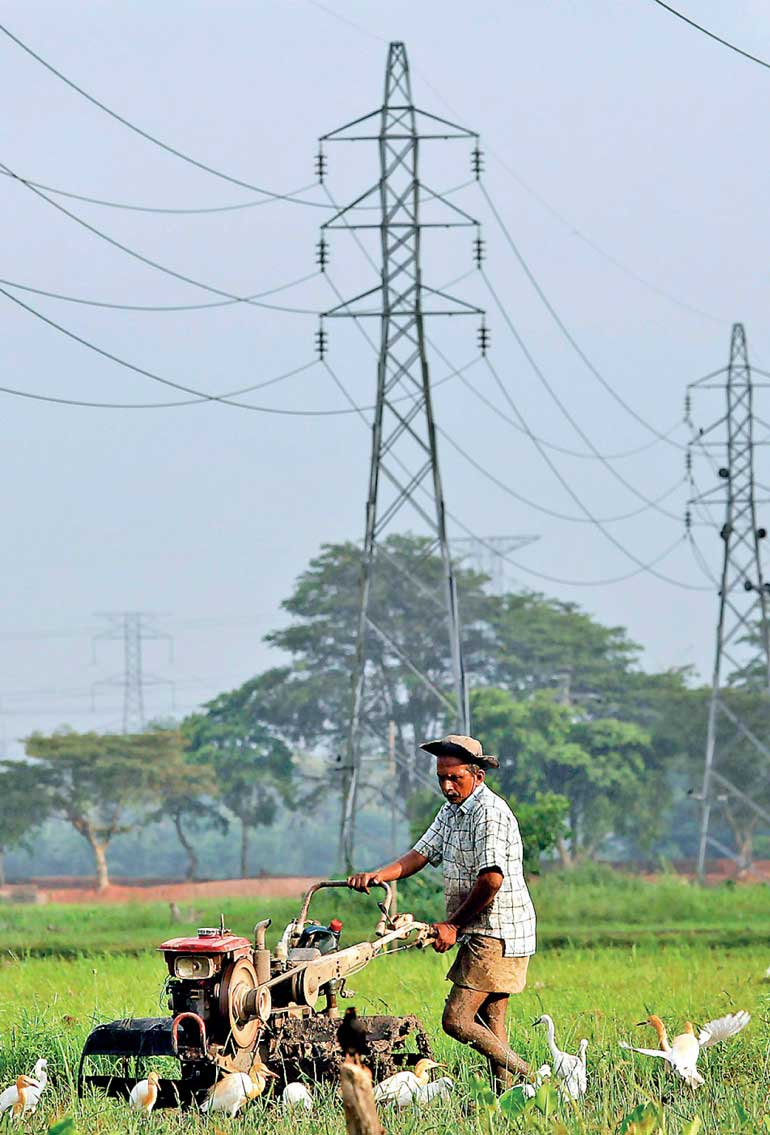Sunday Dec 14, 2025
Sunday Dec 14, 2025
Wednesday, 2 March 2022 00:00 - - {{hitsCtrl.values.hits}}


The best way to understand the value of something is to experience life without it. These days, the Government is giving us a crash course on the value of reliable electricity supply. An unpleasant lesson, but nonetheless a learning opportunity.
but nonetheless a learning opportunity.
If we probe the causes of load shedding, the learning can be deeper. Load shedding can be eliminated, but at a cost. When hydropower declines due to periodic drought, the difference can be made up with generators running on imported fuel, the dollar price of which is determined by world market conditions. We can have 24x7 electricity, but not at an affordable price.
The Government created the immediate conditions for unreliable electricity supply through mismanagement of the country’s external debt. Today’s problems are not caused by delays in building additional generating capacity; they are caused by the lack of dollars to provide fuel for the existing generating plants. But there were deeper weaknesses in the organically developed system that must be understood.
With benchmark crude oil prices going over $ 100 per barrel, we must rethink our dependence on imported fossil fuels.
Reducing dependence on fossil fuels
Examination of the composition of our imports (Figure 1) shows that refined petroleum and crude oil taken together is the largest or second largest category of what is imported. It follows then that reducing the import of petroleum products would be an action that would satisfy many: those concerned about global warming will be made happy; those who want self-sufficiency would also be pleased.
Petroleum imports are not used solely for electricity generation. But the way to reduce the consumption of petroleum products for transportation also involves electricity generated by renewables: buses and trains that are powered by electricity; lorries, cars, three-wheelers, and two-wheelers that are powered by electricity. Promoting electric vehicles makes no sense unless electricity comes from renewable sources.
The significant increase in expenditure for fossil fuels starting in 2011 (Figure 2) appears correlated with the massive increase in the vehicle stock after the end of the conflict, leading to a doubling by 2014. Luckily, the biggest increase was in two wheelers, which do not take up a lot of road space and consume less fuel.
Generating electricity from renewables does require some imported elements such as low-cost, efficient turbines and photo-voltaic panels but the costs and dependence is nowhere near that which exists with imported oil and natural gas. In fact, it may be possible even to export electricity at certain times of the day or even for months on end. But this will require substantial investment in the transmission grid.
Preconditions for increasing use of renewables
An economics commentator whose work I follow had expressed puzzlement at “demand for electricity is higher than supply” being given as a reason for load shedding. Others had expressed outrage at some Facebook posts that I had shared, which stated that solar and wind could not provide a complete solution to our energy woes. These responses by well-meaning and intelligent commentators made me realise the need for a better understanding of how the electricity is generated, transmitted, and distributed.
For all practical purposes using currently affordable technology, electricity must be treated as something that cannot be stored (but see discussion of pumped storage below). That means that it must be generated at the same time as people consume electricity by activating lights or appliances. Peak consumption in Sri Lanka (in the evening hours starting from around 6:30 p.m.) is around 2 or 2.5 times that of lowest use which is around 1000 MW.
That necessitates a cheap source of baseload electricity that can be drawn upon throughout the day. In addition, we must have other sources that can be mobilised as demand increases. One would think that the major hydroelectric plants that have been built on the main rivers which generate cheap electricity that is unaffected by world market prices and the value of the rupee could serve as the source of baseload power. But there are constraints, such as competing demands from agriculture. The weather affects hydropower, as we are experiencing now.
Therefore, planners in the past argued for coal as the ideal baseload for Sri Lanka. If Norochcholai does not keep breaking down and operates optimally, it can give 900 MW continuously whether or not the rains come. But it does break down, and it appears there have been irregularities in coal purchases. Coal, even if procured on long-term contracts at the lowest possible price, still must be paid for in dollars.
There are those who argue that Sri Lanka has plenty of wind and sun, and we can solve all problems by shifting to wind and sun. But the simple fact is that these are intermittent sources. Solar does not produce electricity when the sun does not shine and produces less when clouds cover the sun. Wind can produce throughout the day and night, but there are times when the wind dies down. It requires complex system controls to blend these intermittent sources into a centralised system designed for large, stable and controllable generators.
Countries have incorporated massive amounts of intermittent renewable sources. In 2019, 47% of Denmark’s electricity came from wind. But they have a very sophisticated grid that is capable of handling intermittent power sources, and they use interconnections with other national systems to help balance the system. So, for example, when excess power is generated by the Danish wind turbines, it is used to pump water back up into reservoirs in Norway and Sweden (a method of storing electricity in the form of water known as pumped storage), which can then be run through turbines again to produce more electricity when needed. Yet with all that, Danish consumers pay more for electricity than their neighbours.
Similarly, if Sri Lanka is to increase the use of intermittent power sources, we will have to upgrade the grid and the system control centre’s software. Given the difficulties of synchronising the frequencies to one big plant such as Victoria, it may even be necessary to gradually convert the grid to direct current. If the Sri Lankan grid is connected via a high voltage direct current cable to the Southern Indian grid, the much larger combined system can absorb a greater amount of wind and solar power.
Interconnecting does not mean that a country gives up on generating its own electricity. It simply means that marginal amounts of electricity will flow in either direction when it is advantageous to two (or more) systems. The fact that the peaks are different in the two systems can also be used to reduce the high costs incurred at peak.
It may be necessary to directly link revenues derived from regulated prices to those who make the substantial investments needed for the grid. This will almost necessarily require a restructuring of the current ungainly, unresponsive, and money losing CEB in a manner that allows the transmission unit to be run efficiently.
All these options require careful study in terms of costs, benefits and energy security. The relations between Denmark and its neighbours are such that all the parties can be confident about the contracts being respected and any disputes that arise being settled in a fair manner. We must ensure that the interconnection agreements with India have all these safeguards. The precedent of India’s interconnections with Bhutan shows that mutual interdependence is achievable in South Asia. The experience in Europe where interconnection, including over long distances across water, is growing rapidly even after Brexit, will have to be studied.